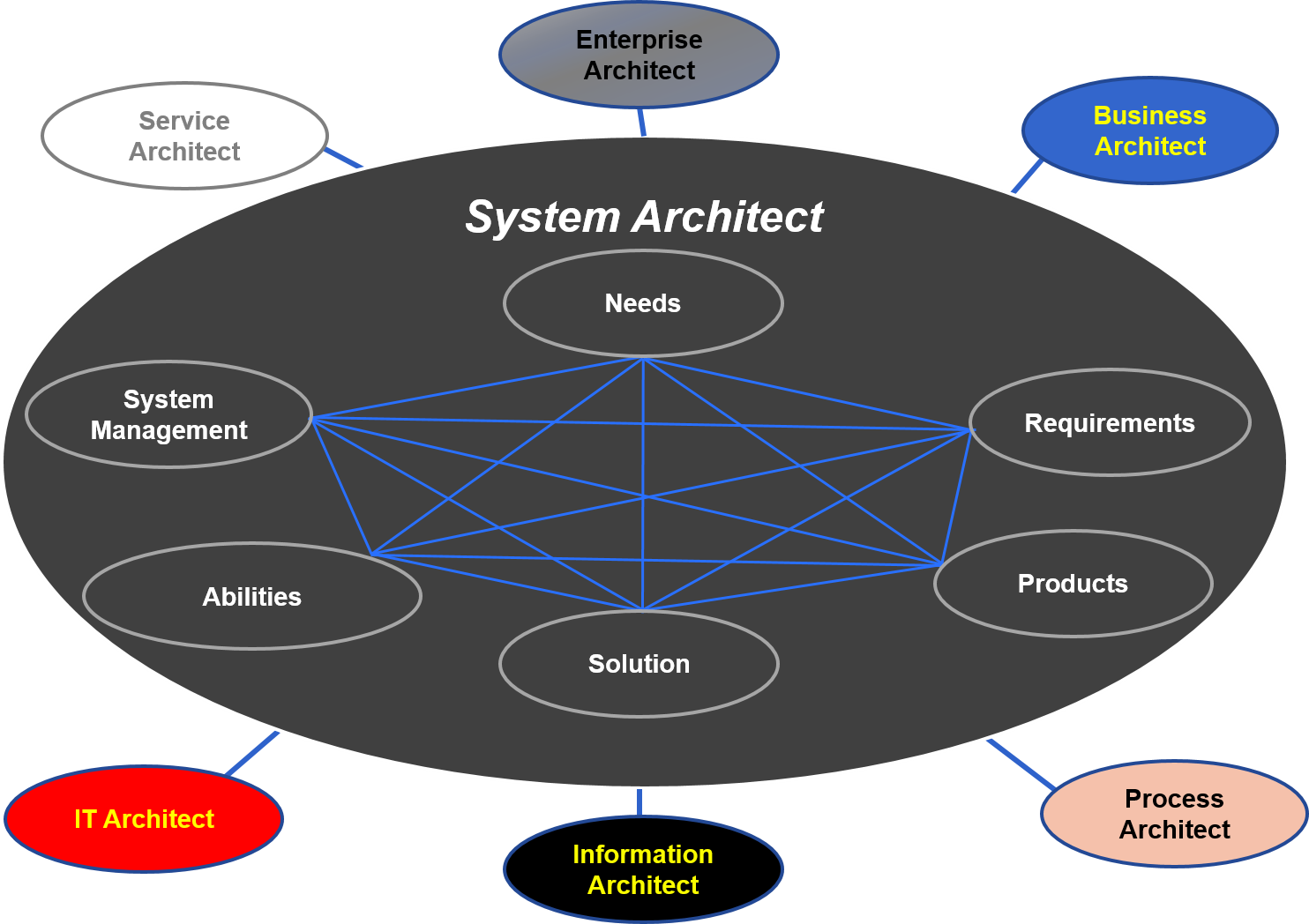The system architect role is the enterprise system architect role responsible for architecting the system offering architecture in support of the system manager role.
The system manager role uses the system offering architecture in support of system offering management of the system offering system.
The system architect role as a team member has inter-dependencies with other team members and what the others do. With the knowledge of how everyone fits in and the setting of expectations between everyone, the team will be a team and will be able to best utilize the talent of the individuals.
As shown in Figure 72 – System Architect Concept Diagram, the system architect role has architecture responsibilities for
and is interconnected with and interdependent on the
- enterprise architect role
- business architect role
- process architect role
- information architect role
- IT architect role
- service architect role
 Figure 72 – System Architect Concept Diagram
Figure 72 – System Architect Concept Diagram
EA Practitioners in the System Architect Role
In practice, the system architect role may be divided by the specialty areas into the sub-roles of the mission architect role, requirements architect role, products architect role, solution architect role, operations architect role, and technical management architect role. In practice, the products architect role is often divided into the hardware architect role, software architect, and system data architect role.
When the system architect role is divided into sub-roles, the system architect role enables and assures these architectural roles are integrated in their efforts so their architectures integrate and with other architectures outside the system architecture.
Similarly, the products architect role enables and assures the architect roles within products are integrated in their efforts so their architectures integrate and with other architectures outside the products architecture.
It should be noted in practice, the system architect role is often fully or partially combined with the enterprise architect role or other architectural roles to provide an organizationally needed job (a “specialty”) to address special needs and other organizational needs and limitations of the organization.
< Previous Page | TOC | Next Page >